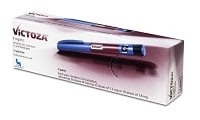When the 2013 round of pharma payments to U.S. doctors went public, the brands that accounted for the most spending were Novo Nordisk's ($NVO) Victoza, Pfizer ($PFE) and Bristol-Myers Squibb's ($BMY) Eliquis and AstraZeneca's ($AZN) Brilinta.
In 2014, a few things changed--a lot. Others stayed almost the same.
The new brand at the top of the doc-payments list, with $22 million to its credit, is AstraZeneca's diabetes drug Bydureon, a head-to-head competitor for Novo's Victoza. It didn't appear on last year's top 10 list at all. AstraZeneca is looking for big growth in diabetes, and Bydureon is one of the meds it thinks has untapped potential. Plus, both drugs now have a new rival in Eli Lilly's ($LLY) Trulicity.
That's one of the big changes. In the almost-the-same category, we have Johnson & Johnson's ($JNJ) diabetes drug Invokana, one of the SGLT2 class, in second place for 2014, according to Bloomberg's data. Doctors collected $19.8 million in speaking fees, free food and other payments related to that med. The 2013 data--for the last 5 months of that year, the first covered by federal payment disclosure rules--put Invokana in fourth place.
Drugmakers each have individual reasons for shelling out big money to doctors on behalf of these drugs--head-to-head competition within a class, new indications, a tough fight for a small niche. Critics say the speaking fees and free food sway physicians toward pricier branded drugs when cheap generics would do, fuel sales of "me-too" drugs and generally taint the prescribing process. Drugmakers call it "education." Doctors deny they can be influenced by fees and meals; some have backed away nonetheless, by barring reps at their doors and dropping out of speaking programs.
Another J&J drug, the clot-fighter Xarelto, came in third for 2014, with $18.7 million in payments, Bloomberg calculates. It made a bigger move upward--from sixth to third--perhaps because of increased competition from head-to-head rival Eliquis last year. Xarelto also keeps adding new indications to its list of FDA approvals, and new uses mean new rounds of speaker programs and doctor dinners. Eliquis, incidentally, came in just behind Xarelto, as Pfizer and Bristol-Myers did their own work to build market share.
 Brilinta's still in the top 10--it dropped from third to fifth--while Victoza fell from first to seventh. Other brands remained in the club, too--AbbVie's ($ABBV) anti-inflammatory drug Humira and Sumitomo Dainippon's antipsychotic drug Latuda. AbbVie is trying to keep ahead with Humira as the drug nears the end of its patent life; Latuda is a new med in an old category, and Dainippon is trying to persuade doctors it has a role to play, not only in schizophrenia, but in its newer indication in bipolar depression. It's also among FiercePharma's top 10 most-advertised drug brands of 2014, with $179.1 million in DTC spending--a figure that helped put Sumitomo Dainippon among the top 10 pharma advertisers of the year.
Brilinta's still in the top 10--it dropped from third to fifth--while Victoza fell from first to seventh. Other brands remained in the club, too--AbbVie's ($ABBV) anti-inflammatory drug Humira and Sumitomo Dainippon's antipsychotic drug Latuda. AbbVie is trying to keep ahead with Humira as the drug nears the end of its patent life; Latuda is a new med in an old category, and Dainippon is trying to persuade doctors it has a role to play, not only in schizophrenia, but in its newer indication in bipolar depression. It's also among FiercePharma's top 10 most-advertised drug brands of 2014, with $179.1 million in DTC spending--a figure that helped put Sumitomo Dainippon among the top 10 pharma advertisers of the year.
It's a similar story for Takeda and Lundbeck's new antidepressant Brintellix, which accounted for more than $15 million last year, a sixth-place total. While it's a novel med with no direct rivals, it's competing against a swath of older antidepressants, most of which have gone generic. And then there's Sanofi's ($SNY) Aubagio, the laggard in the oral multiple sclerosis field. In tenth place by doctor payments, it's competing with big MS blockbusters: Biogen's ($BIIB) Tecfidera and Novartis' ($NVS) Gilenya.
- read the Bloomberg story
Special Reports: Top 10 drugs by payments to doctors - Victoza - Eliquis - Brilinta - Invokana - Xarelto - Latuda - Humira | Top 10 most advertised prescription drug brands - Eliquis - Humira - Latuda